I first heard about the newest model in the Think line up about a year ago and knew little about it before I talked to Chris Laughlin, US Distributor, in May 2020, who had just come back from his initial paddle in the New SIX. He put it through the paces in the waters of Sarasota, Florida in a multiple condition paddle; downwind, chop, flat, etc. I got off the phone excited to test out this ski in New England conditions once I received my Think skis in a few weeks. So for the past month that is exactly what I have done: paddle the SIX in the different types of Newport/Jamestown/Portsmouth waters, with time trials and comparison trials with other intermediate skis in my garage.

Before I get into the review, my disclaimers. For the past two years, I have been a dealer for Think because I like their skis having owned virtually every model since 2008. Over these years I have had a very good relationship with Think and its distributors. Having said that, I have always put the paddler in the appropriate ski regardless of brand. I have referred many paddlers to dealers all across the East Coast and my reviews have helped sell many surf skis for all brands and broaden the surf ski community. Like all my numerous reviews, this is my experience and my opinion. Your experience may be different. Some paddlers value my opinion, others like to criticize or simply disagree. It all comes with the territory of putting yourself out there. #1 in Surf Ski Reviews!
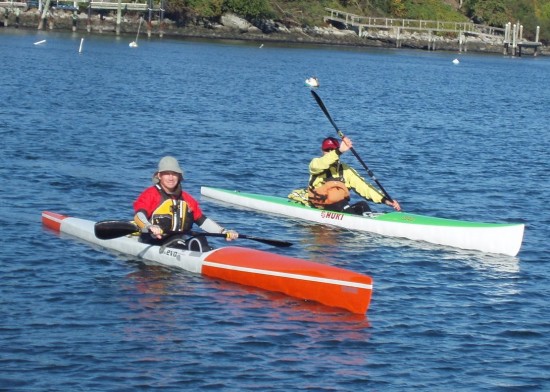
Considering a surf ski?
I ask all paddlers when they buy a ski a series of questions to qualify them so I can suggest the appropriate ski for them. The number one question is what is your GOAL in paddling; fitness, racing, just catching waves, social or just the occasional summer paddle. My goal, however, has been racing! So that is why I time trial and race the skis I review and think about fit, leg drive, weight, rudder size, etc. It is safe to say I have a pretty good idea of how skis perform in New England conditions. My goal has been to maximize my skill level with the appropriate ski for the conditions I will be racing in. As I like to say “We are products of the water we train in.”
If my emphasis was fitness paddling and not so much racing, I would not have reviewed all these skis since 2003. Having said that, as I told three paddlers who I gave a lesson to over the past two weeks, we (paddlers who race consistently) (25 years for me, sea kayaks/surf skis) are training very hard to make whatever ski we are paddling go faster via intervals, tempo, long paddles, rough water training, and technique.
It is also worth noting, I spend six months of the year paddling in a drysuit from November to April. My window for risk-taking can is vary narrow paddling in 30-40 water and air temperatures. So the differences in boat stability is heightened compared to the warm water paddlers. I don’t have the luxury of paddling in big water during those months. I minimize the risk by my experience and judgment, more stable skis (intermediate skis), paddling in the lee when possible, and putting on a bigger rudder. If you are always paddling in a summer climate who cares so much if you capsize a few times. Capsize in January in New England and it could be your last if you can’t remount quickly enough or your hands’ freeze in minutes. So in many ways, cold water paddlers are more sensitive to conditions while summer paddlers get to explore bigger conditions without too much risk.
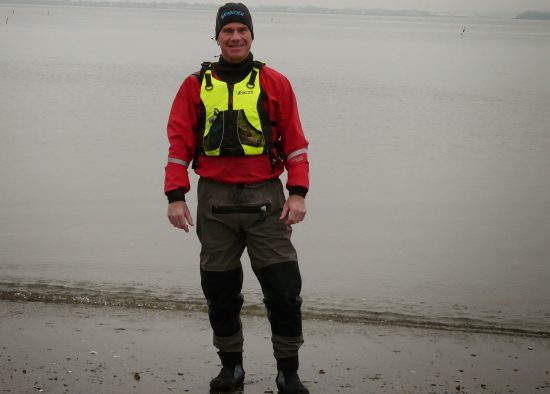
THINK SIX
Let’s start with the dimensions of the Six which are:
19′ 8″ (600 cm): Length
19″ (48.25 cm): Width
11″ wide at the catch (inside measurement)
16″ at the widest inside point of the cockpit
34.5″ Rudder Placement from the stern.
26 lbs Elite layup.
Think SIX, copied from their website.
“Fast, stable, efficient, comfortable! The Think Six is the direct result of our experience with the Zen and Ion, combining the best attributes of both to create an outstanding craft.
The design criteria required high initial stability, so the Six has a reasonably flat hull under the bucket and extending towards the stern (unlike the rounded design profile of the Evo). The rocker line is tuned to perform well in downwind conditions, without surrendering speed in the flats. The paddle entry cutaways remain close to vertical, minimizing the amount of water entering the footwell in rough conditions.
In the ergonomics department, the Six inherits the extremely comfortable seat from the Gen 3 Ace. Slightly wider than earlier models, there is ample room for rotation and leg drive. The base of the seat is placed well above the footwell, with a low hump under the knees, creating a strong position to apply power.
The Think Six comes standard with the bow and stern handles, side carry handles, quick-adjust footboard, Q-Powerline rudder line, and DeBrito bailer.“
Grouping Skis
This ski fits nicely into the intermediate class of skis such as the SR, V10 Sport, Swordfish S, SEI 2G, V10 3G, Evo 3G, and 550 1G all of which I have owned, reviewed, or paddled. I currently have these intermediate skis: Swordfish S, and the SEI 2G and recently paddled for the 3rd time the V10 3G Elite. In the entry-level class I currently own the Think’s Ace, Zen, and in the advance class the Ion(Elite and Ultimate), Uno Ultimate, V14 Ultra, and V10L Ultra.

Now with the welcomed addition of the Six, the Think line up has two skis in the intermediate class Evo and Six, similar to the other manufacturers like Stellar with the SR and SEI, and Epic with the (V9?, V10 sport, V10 3G. Not sure at this point how the new line of Nelo’s will be positioned in comparison. This class of intermediate skis is very popular across all brands since it suits many paddlers’ weights, hip size, skill levels, and can handle varying conditions with few exceptions. This class reminds me of SUV’s car market that has many competent cars from sub-compact cars like my little, but competent Impreza to the luxury SUV’s. This class is the most versatile class of skis for most paddlers.
It’s helpful to classify or group surf skis so we can talk about them more easily though it has its limits. There are a few skis that I call tweeners that span a couple of classes so you need to be mindful of that. Another drawback as I was reminded a few weeks ago, some paddlers bristle at the thought of buying an entry or novice surf ski. Even if they agree with you this is the stability they need, their ego often gets in their way. So I eventually had to reframe the discussion for this paddler. I suggested he forget about the terms novice/entry-level and simply concentrate on his stability level. He was trying the Zen and the Ace and ultimately bought the Zen. Also classifying skis can be problematic since many of us (myself included), prefer more stable, performance-oriented (ie, entry, intermediate, tweeners) in the ocean. Another area of concern is that some manufacturers take issue if you classify their ski differently than how they want to market them. Regardless of how I might group a ski, buy the one that fits your needs based on all the factors I have discussed in many of my posts. As always, you need to try a ski before you buy it if possible.
Think Six Cockpit
Fit is the number one priority when paddling a surfski. Cockpit comfort is key. If the bucket is too tight, ocean paddling can be a nightmare. If it is too loose and you have not padded it out, you will be very sloppy in the bucket, and sloppy in the ocean.
While FIT is personal, I have made no secret of my fondness of the Think buckets due to their ergonomic shape, seat to heel height, and their built-in points of contact. They are my favorite buckets because my leg drive is more intuitive in my Think skis. Not to say the other buckets are not comfortable they are. The buckets have come a long way on most of the brands.
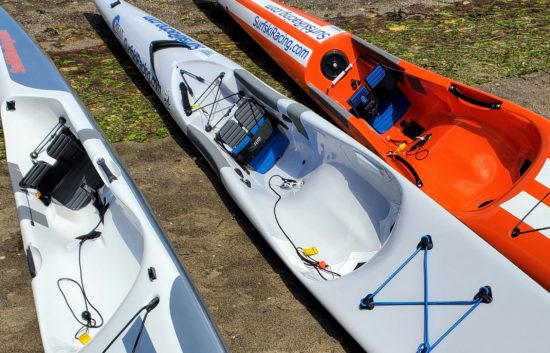
SF 17 3/4 “by 20ft
SIX 18 7/8 ” by 19.8ft
V10 3G 17 3/4″ by 20.5 ft(not shown)
The Six buckets are slightly larger than the Evo 3G and certainly wider than the ZEN. It flairs out at the hips and the calf bump-outs are not noticeable creating a more relaxed fit so it can accommodate larger paddlers. That being said, the bucket is less generous than the SEI or the V10 3G that can fit larger paddlers. I did measure the inside of the buckets of the SIX, SEI, and Swordfish S, and all are 16 inches though the shapes and depths of the buckets vary. For summer paddling I added a little padding in the hips of my Six and an ultra-thin seat pad similar to my SEI and Swordfish so my butt would not slide, particularly in rough conditions. Interestingly what you will notice in the seat pan of the Six, is a barely noticeable contoured place for your butt. It reminds me of having a seat pad already embedded in the bucket. So the bucket will fit smaller, medium, med/large paddlers easily, and many larger paddlers depending on hip size. The hump is noticeably lower so shorter paddlers like me will not hit the hump.
Last year Think changed out their “micro-adjustment footplate” to a squeeze and pin system on certain models, similar to the Epics though the rail and pins are more robust. This system is super easy for demoing a ski once you have set the toe pedal angle. They also changed the angle of the L bracket where the rudder line is threaded through to reduce the wear on the line. The yellow rudder line that was used in all the skis is now a braided blue thin line that is harder to untie a knot that had me frustrated at times. I had to pull out my mini pick to speed up the process having set up a number of Think skis for customers.
Think changed its De Britto bailer to The new “standard” bailer that operates with index openings of 0, 10 and 25 degrees and is easier to open/close due to the long handle. The Race bailer operates with index openings of 0, 10 and 20 degrees which were on the previous Think skis. I am no fan of the bailers on any ski preferring the no-fuss venturi’s. It reminds me of car knob radio buttons versus the older touch screen radios. Eventually, car manufacturers redesigned their entertainment systems to be more functional, some even went back to buttons since customers complained about the functionality of touch screens making them over complicated.
Stability
First of all, skis are getting shorter with less volume than in previous years. Most intermediate skis outside of Nelo are 20 feet within a few inches give or take. For me as a medium built paddlers, this feels like an appropriate size. Skis have been on a diet too, losing the excess volume. The SIX is a medium volume ski similar to the Swordfish S and the SEI. This helps in decreasing the weight and windage and contributes to its handling. While we adjust to any ski length, the SIX feels right to me.
What is noticeable from the first time you sit in the Six is the very good primary stability, not much movement which can put many paddlers at ease. Contrast this to the Evo 3G that made some paddlers uneasy from the start. Once you power up, the Six feels nice and smooth. I have paddled the Six in all but the roughest conditions on the Sakonnet and in Jamestown. I have also paddled it in 2-4 ft downwind paddling beside my friend Chris in his Epic v10 3G. I have over 50 miles on my Six.
So the Six feels more stable than in flat to moderate conditions than the Swordfish and the SEI. Once the conditions pick up, you can feel the design of the flatter bottom of the Six kick in. While it remains stable, it reminded me of my Zen that has a flatter bottom as well. It has a different feel than the more rounded bottom skis. Plenty stable but different. A theme that runs through most of the Think skis is that they have flatter bottoms than virtually all other skis. My experience is in the Legend, Uno 1G, Uno 2G, Zen, and now the Six, once you get up speed the ski begins to glide on the water, ie planing hull or combination planing hull.
One design feature of the Six that contributes to its stability is the rudder placement (35. 5) inches from the stern). That is 1.5 inches further forward than the SEI(34 inches) and is similar to the Swordfish S at 35.5 inches. This rudder placement makes any ski feel more planted in the water, on the waves and increases maneuverability. By contrast, the rudder placement on my V10L is a mere 32.5 inches on its 20. 2-inch frame and my V14 at 21 ft has its rudder at a short 31.5 inches from the stern.
Another design feature you look at is the how narrow the catch is. The inside catch on the Six measures 11 inches as does the Swordfish S. While the catch on the SEI measures 12 inches, and my V14 measures 9.5 inches. While we all like a narrow catch, one that is too narrow contributes to instability particularly in ocean conditions if not matched well with the other components of the ski. The SEI while having a wider catch gains a significant amount of its stability with its flair at the catch.
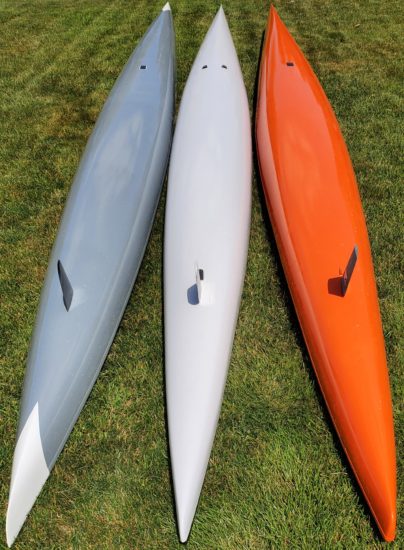
The Six is has a well-balanced rocker profile that contributes to its combination of speed vs stability ratio. The SEI, by contrast, has much less rocker in the stern, while the V103G has the greatest amount of rocker reflecting the different design intent of each ski: V103G for downwind, Six, and SEI for more all-around conditions, and the Swordfish S optimized for downwind. If you look at my V10L and V14 they have little rocker, with rounded bottoms design for more flat water speed. The added benefit of less stern rockered skis is that you can easily swap out to a shorter rudder and still maintain positive rudder control in flat to moderate conditions for the skilled paddler. Highly rockered stern skis always require a longer rudder to be in the water or you can move the rudder forward and still maintain directional control and turning capabilities.
I used the standard 7-inch Think rudder for most of my miles but I wanted to try my 8 inch Evo DK slimline rudder particularly in rough waters. Since I tend to paddle the Six in weedy rougher conditions, I found I like it better so it remains on it.
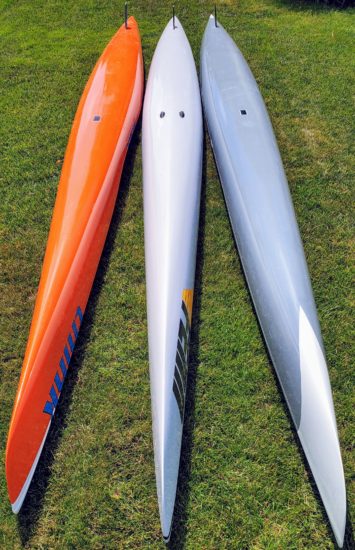
Swordfish S carries V much further back than SIX or SEI. SEI is has little Vness. Six begins to flatten out much earlier than the other two is carried back to the stern. Stern is fuller on the Six.
Well, that’s a lot of words to say simply, the Six is a stable intermediate ski that compares nicely with the other high-end intermediate skis with more primary stability. There are some nuances as I have pointed out. Paddlers that often found the Evo too unstable for them, by comparison, can now look forward to trying the Six with more primary and secondary stability than the Evo.
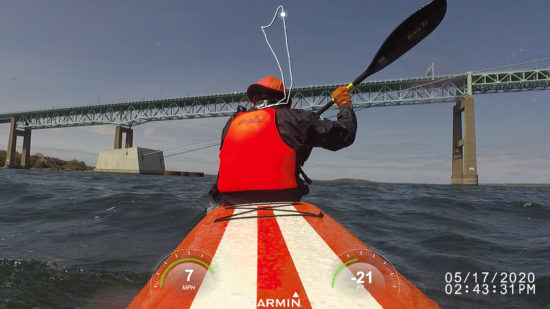
Speed
As I said earlier, my goal is racing, so the speed is important to me. Not quite so much as when I was younger but nevertheless I still like to maximize my speed to my current skill level, and race conditions. For example in the first race of the season last week, Ride The Bull, I opted for my trusty Zen over my Six after the conditions change just prior to the start. It was a big power washing machine for 9 miles.
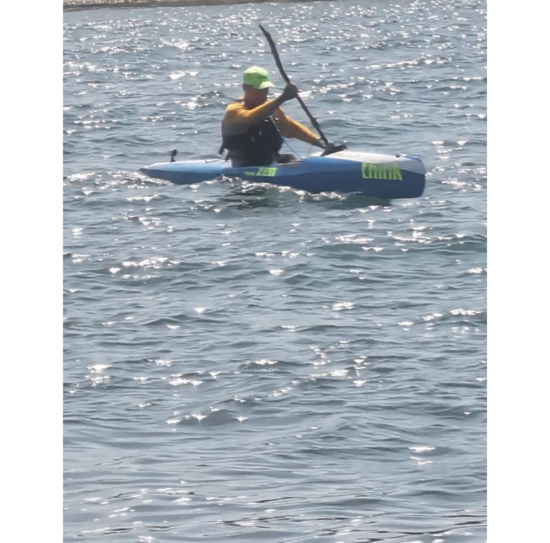
conditions.
While I have paddled the Six in big conditions, I have spent most of my time on the Sakonnet with a few trips to Jamestown for rough water training. Having said that I have time trialed the Six on my usual time trial course from .27 to 1.63 to 3.2. I have also mixed it up with Chris in his V10 3G Elite and compared it back to back with the SEI and the Swordfish and on a separate day the V10 3G. So I feel confident I know the speed of the Six in my diverse waters of the Sakonnet and Jamestown including 2-4 foot downwind conditions. Below are many of my time trials.
1st Time Trial in the Six above. Right in line with the other time trials of my intermediate skis of the past. Click and scroll down to the LAPS.
House on Rocks to Newport Bridge Time Trial. Remember when I do each time trial, it is a training paddle for me. Some days I am rested, some not. If you do enough of them you then great sense of its speed. The beauty of reviewing over a few months vice a one off like many reviews and commentators.
Black Point to McCorrie Point, 3.22 time trial. SW 15 mph on quartering beam.
Sandy Point to McCorrie Point, 1.5 ft seas, SW at 10mph
Above are my intervals I did one of my standard time trials comparing the Six to the V10 3G Elite showing similar speeds. After Chris and I paddled 10 miles, I paddled the Six first from the pier to pier, then rested 2 minutes and paddled back. Conditions were 10mph and on the quarter beam. I then paddled the V10 3G using the same format. Of note, I was loose in the bucket of the V10 compared to the Six and the V10 is approximately 1.5 lbs lighter and both had comparable rudders.
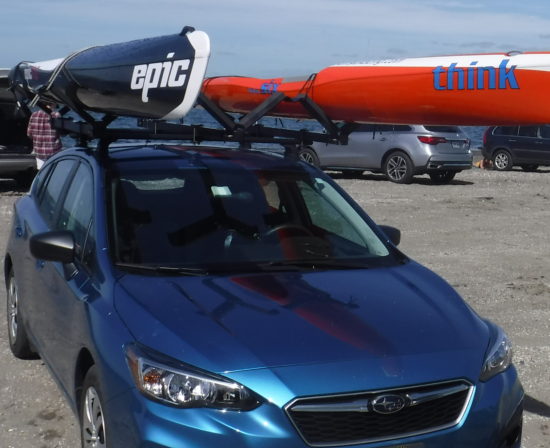
I also time trials the Six, Swordfish S, and SEI back to back a few weeks ago. As you can see, the times are very similar in .27 mile pier to pier time trials.
Think SIX above
I paddled the Six first. 1st interval then 3 minutes rest, then reversed the course for 2nd interval. Take a look at the LAPS.
Then I switched skis to the Swordfish S and started with the 2nd ski a 10-minute REST. Down and back the 10 minute REST and trialed the SEI. Look at LAPS.
Fenn Swordfish S
Stellar SEI
So as you can see from these time trials, the SIX is right on par with these other very capable skis. When I paddled with Chris (V10 3G Elite) and we paddled at race pace for 3 or 4 miles, we were neck and neck or he was ahead by a boat length. We agreed his fitness level was greater. On a separate occasion, I paddled my Swordfish S on brillant downwind day with Chris in his V10 3G with him once again even or 1 length ahead.
So I was really pleasantly surprised by how well the Six stacked up with other intermediate skis. I believe once you get up to speed on a wave the flatness of the hull allows it to skim over the waters. My only wish was that I wanted it in an Ultimate lay up! Remember the Six is the widest and the shortest of these skis. Good Stuff!
Summary of the Six
- Same great fit in the bucket, just now wider than the Evo to fit more paddlers.
- Right in line with the other skis in terms of rough water stability with a different feel in bigger conditions due to flatter hull. More primary stability. More stable than SEI, V10 3G Elite, and Swordfish in flat to moderate conditions. Much more stable than the Evo 3G in all conditions.
- Speed is on par with the top end intermediate skis. Faster than lower end intermediate skis like SR, V10 Sport, probably the V9 since it is wider and shorter with more rocker though not paddle V9 yet.
- It is a very good looking ski with sleek lines and mid-volume.
- Build quality is excellent.
Lastly, Think came out with the very popular Zen a couple of years ago and now it has designed the SIX which is a superb all-around intermediate ski for all conditions. I prefer my DK 8 inch rudder over the standard 7 inch for bigger conditions.
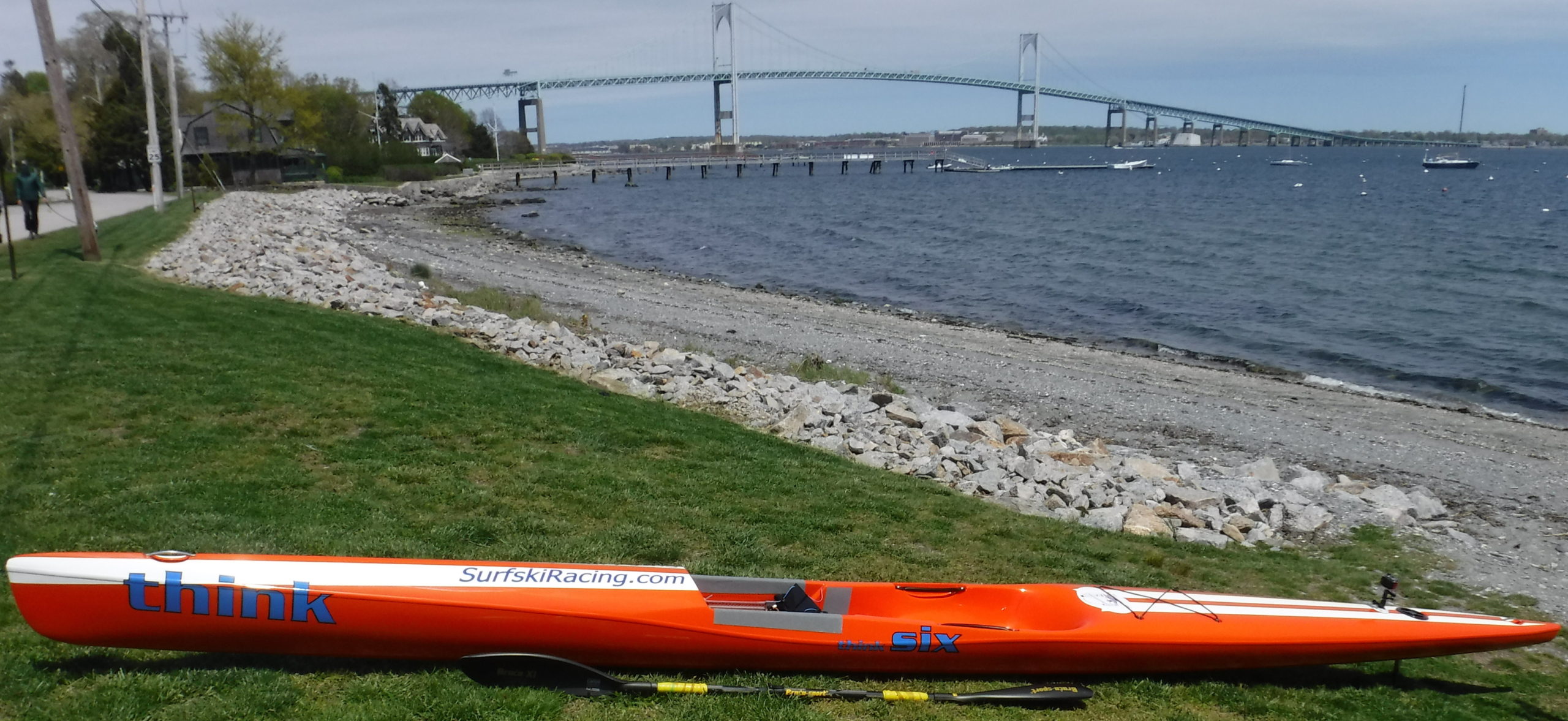
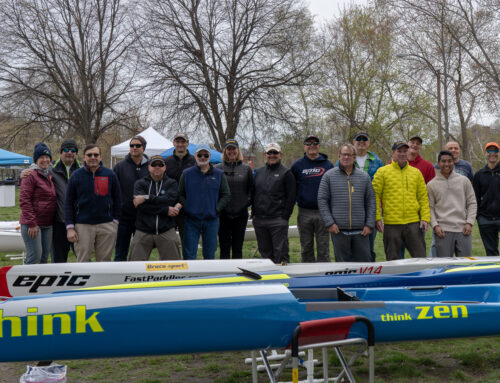
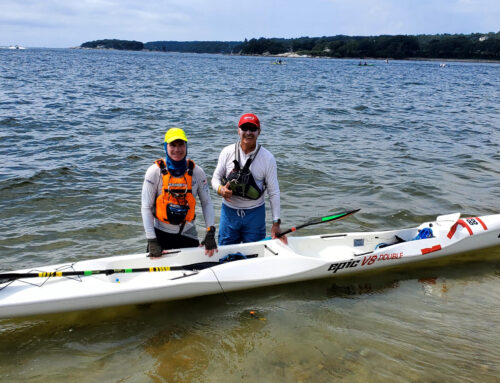
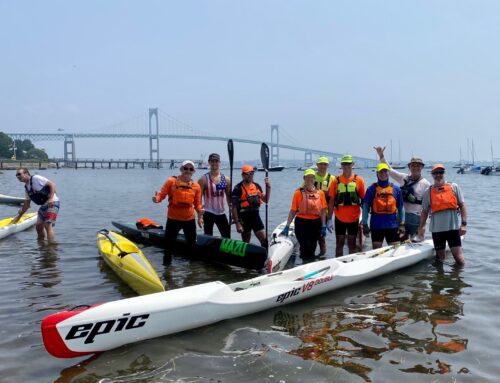
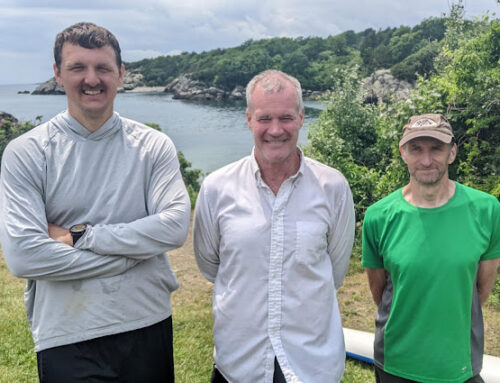
Leave A Comment
You must be logged in to post a comment.